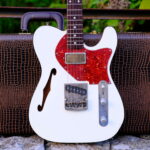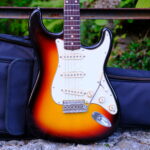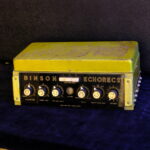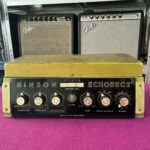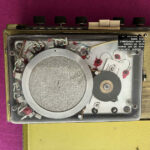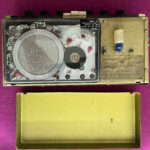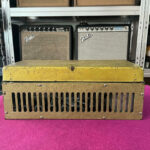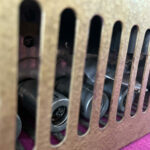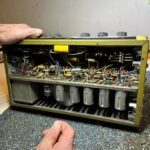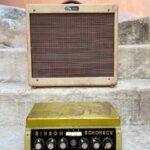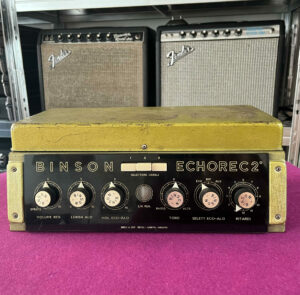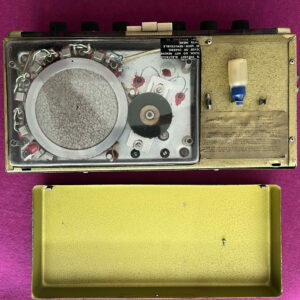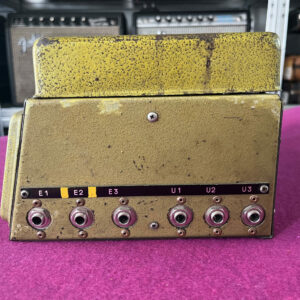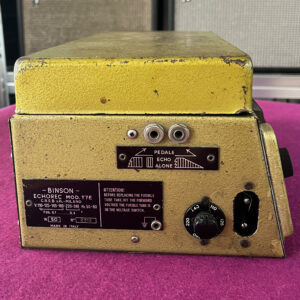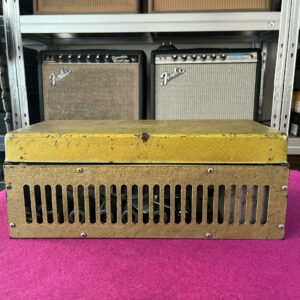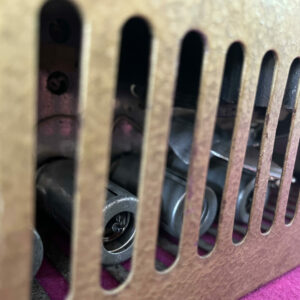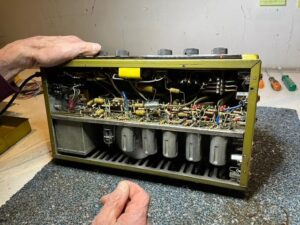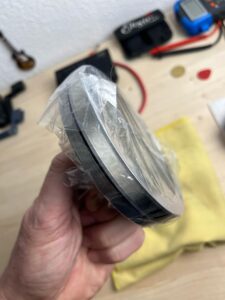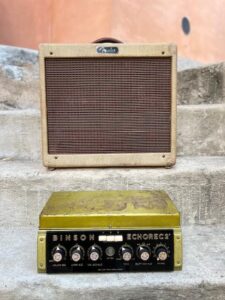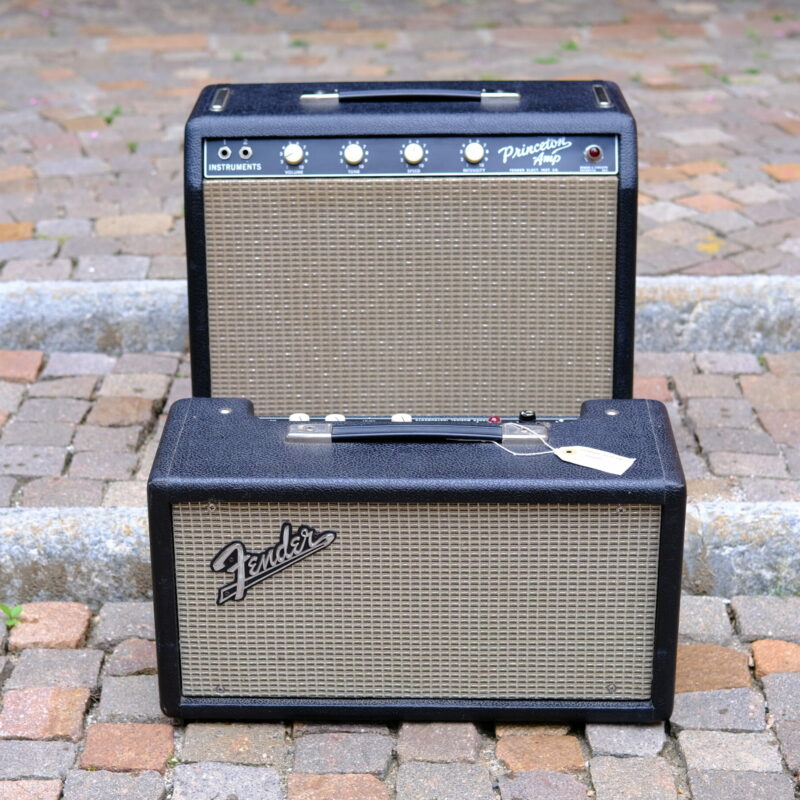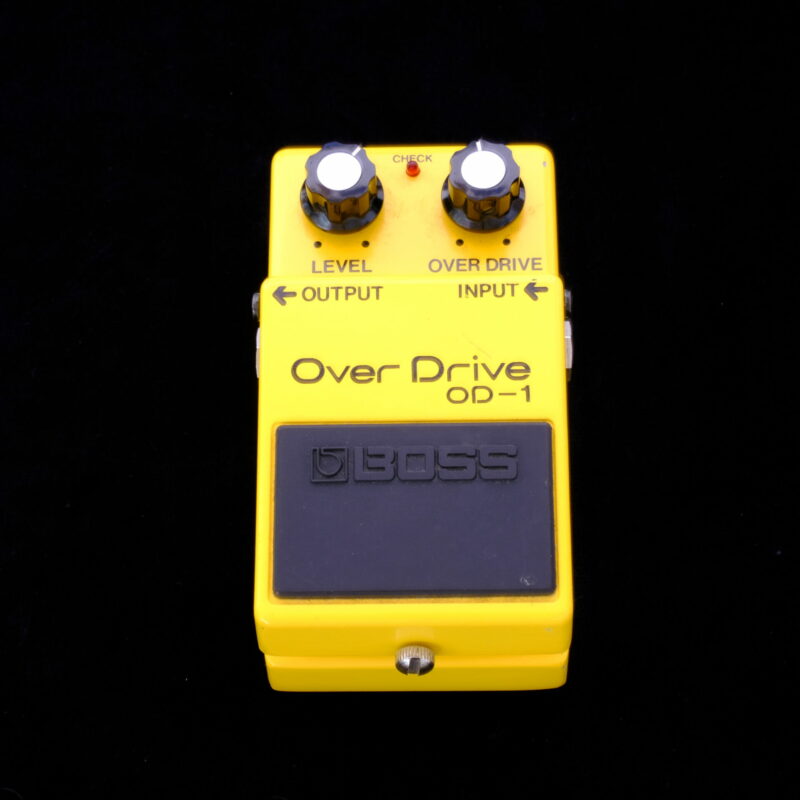Binson Echorec 2 T7E
Serial number: 2312
Cosmetical condition: VERY GOOD - the front is clean with no issues, overall very nice condition with some signs of natural aging, in particolare on the top of the cover.
Technical condition: excellent - all original wiring, *original caps, original tubes.
Upgrades/modifications: rewired drum by LGK Teknik / Lars Göran Karlsson.
Serviced by Franco Avona in April 2025 (he is the original Binson Echorec technician), 1 oscillator, *1 capacitor, 1 magnet replaced.
History:
The Binson Echorec is an echo machine produced by Italian (Milan) company Binson founded by Dr. Bonfiglio Bini, an early manufacturer of such devices. Unlike most other analog echo machines, they used an analog magnetic drum recorder instead of a tape loop.
Binson Echorecs are amazingly-engineered machines: where a tape echo's input sound is recorded to tape, on a Binson it is recorded onto a circular spinning disc which has replay heads positioned around it. It is possible to select single and repeating echoes or reverb-like swells - these units have a sound all of their own. They look fantastic at night (or on a darkened stage) with the magic eye valve glowing green and the backlit plexiglass fascia. Binsons were one of the must-have pieces of equipment for bands in the early sixties, alongside the Fender Stratocaster and Vox AC30. Famously-used and abused by Barrett, Gilmour, Waters and Wright of Pink Floyd in the 60s and early 70s (Echorec 2s are very much in evidence on Live at Pompeii and can be seen on photos from many Floyd live shows), Binsons are increasingly sought-after today by studios, mix engineers and producers for their unique sound: Michael Brauer (Stones, McCartney, Coldplay) famously has an Echorec 2 in his arsenal of vintage delays.
Description:
The Binson houses 6 12AX7 tubes. On the right side panel, there are jacks for three inputs and three outputs. On the left side panel, there’s a volt selector, input jack for the on/off footpedal switcher and a power outlet. The front panel has 6 control knobs, a 3-button channel selector and a level indicator.
Input Control
Controls the input from the instrument to the delay path. It is possible to overdrive the input tube to achieve an overdrive effect, which then can be controlled by a volume pedal to keep it manageable to the amplifier. There are also internal trimmer controls to further adjust the sensitivity of the input.
Length of Swell
Controls the feedback/number of repeats.
Volume
Controls the delay volume based on the Input Control setting.
Bass/Treble
An Equalizer colouring the delay signal. The effect is very subtle changing from darker to brighter.
Selector
The selector has three modes:
Echo – classic 50s slap back delay
Repeat – standard delay mode
Swell – delay with overlaps, closer to a reverb
Switch
Selects different combinations between the playback heads.
Level Indicator
This eye in the middle of the unit, shows the level of the input signal.
Channel Selector
Selects the 3 inputs for each instrument. You can have two channels active at the same time with different outputs, – one with effect and one dry, both delayed or both dry
*Don't hesitate to ask for more infos and details, I will send manufacturing date codes and interior pics per request: e-mail


